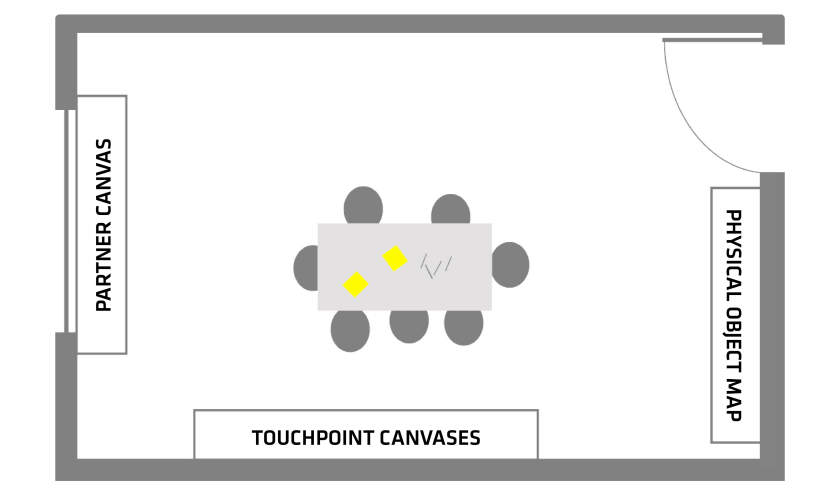How to Prepare for a Digital Experience Platform, Part 1

In the first part of a three-part blog, Heike Heger, Head of Marketing at Platinum Ibexa Partner adesso describes how to lay the groundwork for a successful DXP implementation.
Why Consider a DXP?
Digitalization has been progressing for years and many businesses have by now reached high levels of digital maturity. Customers are setting the pace: increasingly experienced, emancipated and demanding, their expectations rise with each technological advance.
This profound change affects not only the retail industry and the world of global brands. Rather, all businesses, institutions and public bodies need to digitally create memorable customer experiences in order to thrive. What you want to achieve at the frontend may appear simple and even obvious enough but requires well thought-out processes and mature technologies in the background.
This is where Digital Experience Platforms (DXP) come in. A DXP is the logical next step and successor of the Content Management System (CMS). The Web Experience Management (WEM) capabilities of a DXP result in an optimized customer approach generated by smart interfaces and seamless processes for all relevant channels, continuously updated in real time.
In addition to the obligatory CMS, a DXP usually offers contextualized data (customer profile engine, translation, omnichannel, and so on), e-commerce functionalities, Digital Asset Management (DAM), interaction possibilities (chatbots, mobile apps, marketing automation) and digital process systems such as Business Process Management (BPM) and Marketing Resource Management (MRM) through Integrations.
The introduction of a DXP as one of a number of customer experience projects is typically neither a small nor insignificant undertaking and as such requires highly professional project management as well as the support of the right stakeholders.
How do you lay the groundwork for successful project management? In this three-part blog series, Ibexa partner of the month for June 2020, ARITHNEA GmbH, shows you how to plan your customer experience project in three clear steps – regardless of where you are today in your digital journey.
These are the steps which we’ll cover in each of our Blogs:
Step 1: Methodically define goals and project scope
Step 2: Agile through MVP and roadmap
Step 3: The right service provider and the right technology for the project
In this first blog post where you can define your goals and project scope we cover:
- Digital projects: Where are you now and where do you want to go?
- Digital maturity: Four stages from reactive to intelligent
- Determine your own digital maturity level
Digital Projects: Where are You Today and Where do you Want to Go?
‘Every third digital project fails’, ‘The pitfalls of digitalization’, ‘Why digitalization in SMEs is unsuccessful’ – these headlines have one thing in common: the benefits of digitalization are self-evident, but the outcome of digitalization projects can be disappointing. Projects can be challenging. What turns out to be the decisive factor is project management, irrespective of what you are seeking to implement.
If you don’t want your projects to get a bad press, you have to get it right – and plan it right – right from the start.
For the internal project participants, the first thing to do is to determine honestly, realistically and in plain language, well before the start of the actual project, where the business stands in its digital transformation.
Key questions you need to ask yourself are:
- Where exactly do you want to go with your CX project?
- What is the framework for this?
- How can you best proceed?
- With an extended project phase ending in a ‘Big Bang’ of go-live?
- Or would you rather be agile and scrum-based with a Minimum Viable Project (MVP) as part of an agreed roadmap?
And then the crucial question: who is doing it? Do you already have the consulting partner and/ or technology to guide you on your digital path? Or are the right service provider and/ or the best possible technology decisions yet to be made?
Digital Maturity: Four Stages from Reactive to Intelligent
First things first: you have to evaluate where you are in the digital transformation of your business. The introduction of a DXP is in and of itself a very transformative step – but it won’t be the first leg of your digital journey. So, decide how far you have got. As a guide to an initial assessment, we provide a four-stage digital maturity model, simplified for the purposes of this blog.
Four levels of Digital Maturity
Digital Maturity Level 1: The reactive business
At this stage, action is taken when problems arise – and only then. There is no clearly defined vision of Customer Experience management which means that the goals and scope for the proposed CX project cannot be clearly defined. There is a general understanding that digitalization must be driven forward in a process-optimized and customer-centric way – but it is far from clear how to achieve this and where to start.
Digital Maturity, Level 2: The Organized Business
In the second stage of the maturity model, certain initial CX processes have been introduced. However, the big picture is missing. There is no plan of action, no overarching vision, and no clear goals and vision to pursue with any kind of consistency. A common Stage 2 situation is one with some well-functioning marketing or sales solutions in place, but which are not yet integrated with the wider operations of the business. Customer data and customer approaches are still siloed.
Digital Maturity, Level 3: The Digital Company
Major steps towards ‘digital organization’ have already been taken. Business processes have already been standardized in many points across departments. Having attained this high level of maturity, businesses must orient themselves towards perfecting integrations and become leaders in artificial intelligence, project optimization and next-best action.
Digital Maturity, Level 4: The Connected, Intelligent Company
Not surprisingly, very few businesses are at Stage 4 of digital maturity. All major project steps have been taken, and the organization has also fully adapted to the digital challenges in terms of customer focus. The business has a leadership role in both technology and innovation. The challenge now is to maintain pole position, which can only be achieved through relentless excellence and a high level of innovation.
Determining Your Own Digital Maturity Level
Where is your business positioned along this four-stage road towards digital maturity? The answer to this question is an important basic requirement for results-driven CX project management.
Don’t be afraid of this step.
Normally, the question is thrashed out during a short, intensive workshop phase in tandem with the consulting partner. If planned well, this is both time-efficient and highly effective, with beneficial knock-on effects throughout the planning and implementation of the project. In our example here, the introduction of a DXP, we would profile the digital setup of the business ‘as is’ and ‘as it needs to be’ – and determine how this plays out in the project.
A proven methodology for the professional assessment of one’s own digital maturity level is the so-called ‘Interaction Room’.
Interaction Room: Methodology to define project goals and scope
The Interaction Room is not only a recognized workshop method, but literally a walk-in (or online walk-in) room with four walls. Each of the walls represents an important aspect of the project visualized by the relevant stakeholders and then prioritized and evaluated in terms of technical implications. The advantage of this approach is that challenges and risks are jointly identified at a glance.
In the Interaction Room, an interdisciplinary team of business and IT experts work together under the guidance of a method coach and a specialist coach. By deliberating co-operatively within the framework of different evaluation rounds, the workshop participants arrive at a status assessment of the digital maturity level of the business. Feasible approaches and solutions are generated for the next phases of the CX project. It is worth noting that this methodology also works well online through virtual teams at distributed locations.
Interaction Room, source: adesso.de
Interaction Room: Who should enter?
The range of participants is wide and involves stakeholders from Management, Marketing, Sales, Support, Accounts and other departments that deal with the customer and know the customer well. Ultimately, these are the people affected by the processes and strategies that will be transformed as a result of the CX project. Not only that: they will be responsible for its success.
IT should definitely be involved for two reasons. First, IT usually makes a significant contribution to the implementation of CX projects due to the deployment of technologies as well as the interconnections between them. Second, including IT from the outset promotes a shared understanding of the project, its goals and its (technical) feasibility and locks in the commitment of all parties involved. Inviting IT to the Interaction Room ensures closer cooperation between IT and business departments and also screens out project errors, including those that only come to light after completion.
A verification of the workshop results developed by the relevant business departments can be achieved by consulting ‘real customers’ afterwards.
Take-Aways from This First Step Towards Preparing for a DXP: Project Goals And Scope
For the preliminary project phase, it is very important for the business to arrive at a realistic, professional assessment of its level of digital maturity. In all areas of business, but especially in CX, you can achieve sustainable progress and avoid siloed thinking if every project action follows an overall strategy and is not implemented in isolation.
It is important to remember that even the best project management cannot achieve the quantum leap by itself. If you are at stage 1 of the maturity model (as is the case with many businesses large and small), you will not be able to vault your way to stage 4 through a single project implementation, because such a sweeping change affects every part of the business. There is nothing wrong with that and you need to hold your nerve. By focusing on the project goals and adopting a step-by-step approach according to the project scope, you will make sustainable and successful progress in customer-centricity.
Look out our next post where you can read about Step 2- How to lay the groundwork for a successful DXP: Implementing a CX project, Agile through MVP and Roadmap. In the meantime, would you like to learn more about Ibexa’s DXP and how ARITHNEA’s consulting services can help you to implement your project in the best possible way? Arrange your demo and consulting appointment now
Considerations for Creating Rich Customer Experiences
DXP eBook
If you are struggling with your B2B digital transformation efforts, why not reach out to us to discuss your project. Feel free to download and read Ibexa's eBook on Digital Experience Platforms and the four considerations for creating exceptional customer experiences.




